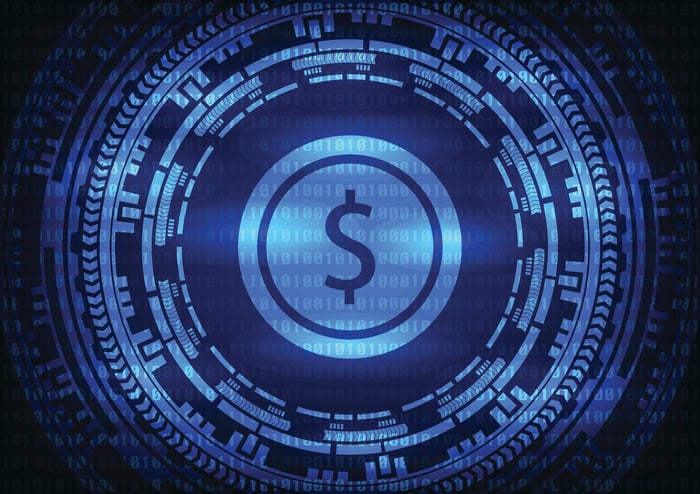Dropbox (DBX 0.54%), the file-sharing and content collaboration platform, announced last week that it would be acquiring DocSend, a secure document-sharing and analytics platform. Despite Dropbox spending $165 million in cash to finance the deal, this acquisition looks good for both shareholders and Dropbox users. Let's see why.
What is DocSend?
Traditionally, when an electronic file is shared, there's very little insight into what happens to that file after it has been sent. For any business with confidential documents, that can make file sharing very difficult, especially when it comes to interfacing with a customer. Businesses need real-time document insights and controls over who can access certain files. This is where DocSend comes in.
Instead of traditional attachments, DocSend develops a link or space for document sharing with additional security. DocSend users can enable sign-in verification, control download capabilities, and easily require viewers to sign nondisclosure agreements. DocSend also provides real-time analytics into who is viewing each document, while allowing users to receive or provide instant feedback.

Image source: Getty Images.
Since its inception in 2013, DocSend has amassed a customer count of more than 17,000 businesses. While that might seem like a drop in the bucket compared to Dropbox's 525,000 business customers, it could provide a reputational boost for Dropbox as well. Despite Dropbox being more than five years past its last hack or data breach, some companies still have worries about Dropbox's level of security. Since secure sharing is central to the DocSend platform, this acquisition should help remove any lingering safety concerns for potential Dropbox customers.
End-to-end platform
For Dropbox users, the most exciting part of this acquisition is that it seamlessly fits right into its existing product suite. In 2019, Dropbox spent $230 million to acquire e-signature provider HelloSign. Now with the combination of DocSend, HelloSign, and Dropbox's core collaboration platform, businesses now have one destination where they can manage the entire lifecycle of a document. From development to secure sharing to signing contracts, this acquisition will allow all workflows to remain in the Dropbox ecosystem without needing to switch to a different one.
Just like Dropbox's other functions and features, DocSend alone won't move the needle for customer attraction or retention, but in conjunction with the rest of its holistic suite of collaboration tools, users have less incentive to churn. Each additional tool that Dropbox introduces enhances the stickiness of its platform, which leads to greater customer dependence, and in turn, raises Dropbox's pricing power.
A capital allocation story
This acquisition shouldn't come as any surprise, since less than a month ago Dropbox announced that it's raising $1.3 billion in convertible senior notes dating out to 2026 and 2028. Along with the $1.1 billion in cash and short-term investments already on its balance sheet, this should amount to almost $2.5 billion in liquidity for management to allocate where it best sees fit.
On Dropbox's latest conference call, CEO Drew Houston was very direct about where it intends to spend that money, stating that Dropbox expects to make several "strategic acquisitions" to complement its upcoming products. These acquisitions also come on top of a recently announced $1 billion share repurchase program.
So whether it's share repurchases, acquisitions, or new product developments, Dropbox management has made it clear that it's going to be efficient with the money it has on hand. While this acquisition seems like a valuable addition in its own right, it should also serve as a glimpse of what's ahead. And for a business that's still growing revenue at double-digit rates while trading at 23 times its annual free cash flow, shareholders should have plenty to be optimistic about.




